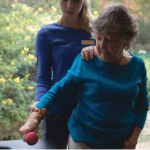
Leszek Glasner / shutterstock.com
Information overload generated by the media, family, friends and colleagues is apparent today. Personal beliefs play an important role in how we filter and process the abundant information available and subsequently identify its utility in daily life.
Regardless of professional specialty, individual beliefs underpin personal approaches to clinical care, research development and engagement with patients and colleagues. Recognizing this is important because a degree of trust in the information source is required to believe what we see, hear or read. Trust implies a belief in the reliability of an idea or its source. A positive response or outcome yields a powerful reinforcement of this cyclical relationship of trust and belief. The magnitude of the outcome also influences the power and significance of our beliefs—and the greater number of people who believe in a concept, the greater their collective leverage on others.1
Culture and experiences create beliefs that shape philosophical lenses. The concept of long-lasting beliefs develops around age 4, and multiple models exist to explain this development.2 The credibility of these models is strengthened or weakened based on experience. Consequently, it is necessary to maintain credibility with the public, peers and patients to believe the shared information.3 Some theoretical models purport that beliefs are fluid and modifiable by new, relevant information, interpersonal contact, social pressure and situational demands.4
Moreover, beliefs are pivotal in our important human need to belong. This underlies the driving force in creating leadership missions and philosophies in professional and personal settings.
Beliefs can influence outcomes in our daily practices as patients, care providers and researchers in countless ways. For example:
- What providers believe from the patient history and physical exam affects the diagnosis and treatment plan.
- What patients believe about their diagnosis and treatment plan impacts their participation and adherence.
- What researchers believe from the data and the results impacts interpretations.
Consider this: At the start of the COVID‑19 pandemic, the public was asked to wear masks. Given the novelty of the idea and mixed early messaging of experts, the public was initially skeptical that wearing masks would provide concrete benefits. As the outcomes of fewer transmissions, hospitalizations and deaths showed the benefit of wearing a mask, belief in the practice increased. The power of this belief stemmed not only from the number of individuals who took up the practice, but also from the quantifiable significance of the outcome (i.e., fewer deaths and infections).5
Confirmation Bias
The belief in science and research depends on many factors. But fundamental to belief in science is the degree to which one recognizes it as a definitive source of knowledge and the acceptance of research as the way of obtaining such knowledge. Humans have a natural tendency toward confirmation bias in searching for interpretations that support already held beliefs and ignoring information contrary to those beliefs.
Data Interpretation
The recognition of one’s belief model is particularly vital to the success of data interpretation. Researchers have a special burden to be cognizant of their own belief models and how they can influence interpretations of otherwise objective data. Interpretation of study results can be flawed if subjective beliefs are added to the equation. Reflexivity allows for examining one’s thoughts as they relate to research practice. Qualitative researchers typically use this practice. However, promoting this level of rigor in both quantitative and qualitative research development and analysis is unusual and profound.6
Here are some proposed grounding tips from the ARP Research Subcommittee:
- Use team-based decision making when determining study design;
- Work with an advisory committee that includes a diverse set of stakeholders with a range of backgrounds and experiences, including patients;
- Dedicate time to understand varied perspectives;
- Employ town hall discussions;
- Base decisions on verifiable resources; and
- Tap ACR/ARP membership resources and collaborative opportunities.
The ACR is a reliable resource for up-to-date, accurate information based on credibility and trust. Trust increases with each experience. The ACR mission is to empower rheumatology professionals to excel in their specialty. Our organization is committed to improving the care of patients with rheumatic disease and advancing the rheumatology subspecialty.
The authors are all members of the ARP Research Subcommittee of the ACR Committee on Research.
References
- Moussaïd M, Kämmer JE, Analytis PP, Neth H. Social influence and the collective dynamics of opinion formation. PLoS One. 2013 Nov 5; 8(11):e78433.
- Tomasello M. How children come to understand false beliefs: A shared intentionality account. Proc Natl Acad Sci U S A. 2018 Aug 21;115(34):8491–8498.
- Pilditch TD, Madsen JK, Custers R. False prophets and Cassandra’s curse: The role of credibility in belief updating. Acta Psychol (Amst). 2020 Jan;202:102956.
- Seitz RJ, Paloutzian RF, Angel H-F. From believing to belief: A general theoretical model. J Cogn Neurosci. 2018 Sep;30(9):1254–1264.
- Bokemper SE, Cucciniello M, Rotesi T, et al. Experimental evidence that changing beliefs about mask efficacy and social norms increase mask wearing for COVID‑19 risk reduction: Results from the United States and Italy. PLoS One. 2021 Oct 11(10);16:e0258282.
- Walker S, Read S, Priest H. Use of reflexivity in a mixed-methods study. Nurse Res. 2013 Jan; 20(3):38–43.



